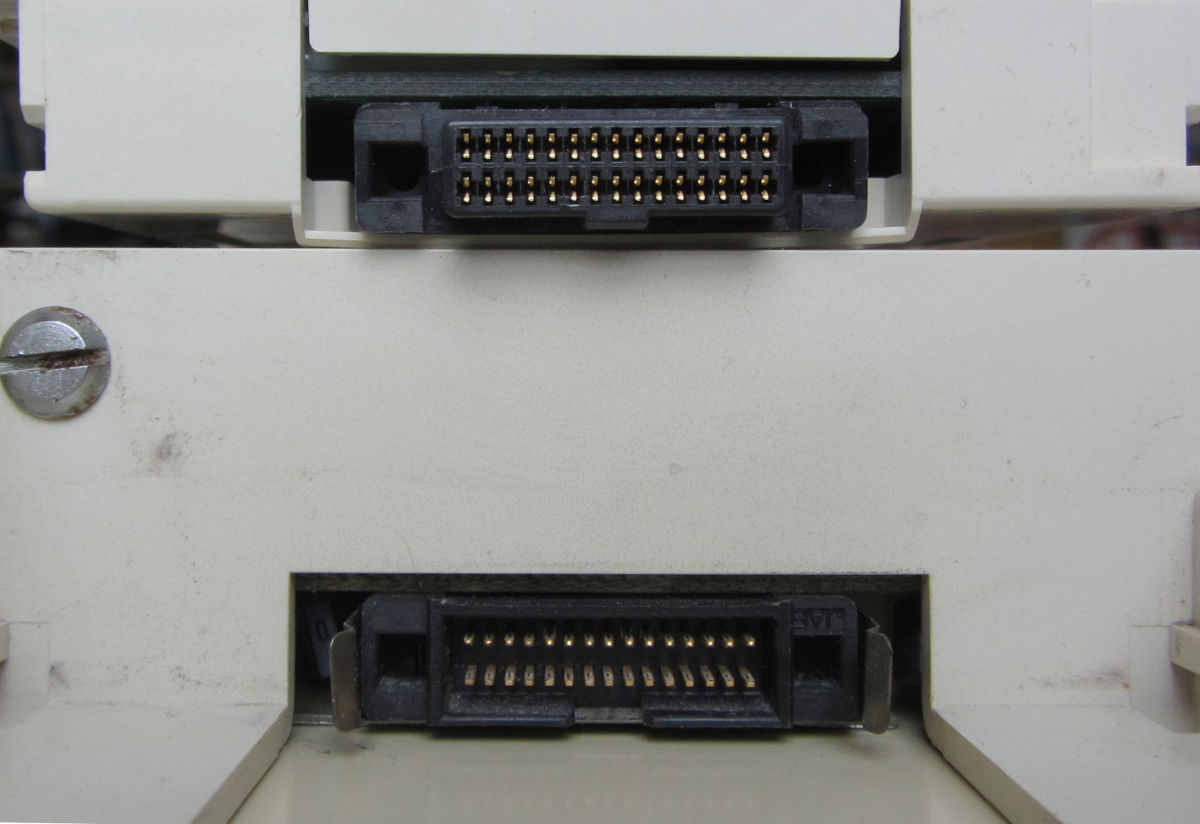H403A

As these ROMs are I/O-mapped, unlike the B: and C: ROM, P-type ROMs like BASIC will not work. (Source: Oprating Manual 1.2.6 ROM capsules)
The ROM cartridge operates in DB mode, device code 01h.
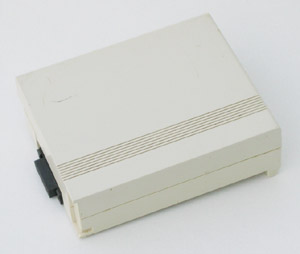
Kit Bullough send me this info on the cartridge (thanks!):
Epson UK were unhappy that the literature said a 64K was available but Epson NEVER made one bigger than 32K so asked me to manufacturer 64K units - I decided to also make and sell 128, and 512 units packed in the same cartridge. At the time only a few governments and airlines could afford that "world's biggest" state of the art memory pack and I hand to have an export licence from the UK government as it was considered "of military importance" - The United States invasion of Grenada 1983 had used a laptop with less memory on the invasion beach.
Epson had to use the mass production system and the time to get a larger cartridge would have taken a year or 2 to get ready - I made the larger cartridges using the latest components and in smaller quantities for governments and other organizations that needed the extra memory immediately. I also transferred to the Px-16 when it was available.
A batch of about 50 PX4 portables was sold to the Nederland Central Bureau of Statistics each with a ram pack designed and manufactured by me. The original idea was for the gathering of employment statistics by taking a laptop to peoples door. The larger memory capacity was considered necessary at the time but not available from the laptop manufacturers.
A special 128 kByte cartridge was designed as a sealed unit and has a U.S. military grade lithium battery developed from a heart pacemaker battery with a theoretical life (based on the drain on the battery) of over 50 years. Some buyers were uncomfortable with the idea of not changing a battery although today we are quite happy with a micro XD card.
The data bus was multiplexed using 4 unused lines to expand the capacity by a maximum of 32 times in the largest we made. As the cartridge was only used for dedicated applications the driver software was supplied to the end user and incorporated into the application software.
The (original) RAM cartridge operates in DB mode, device code 02h.
H404A
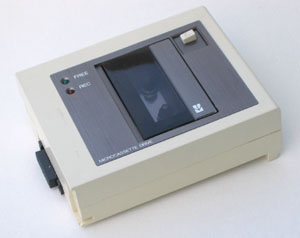
The Microcassette cartridge operates in HS mode, device code 08h.
H409A
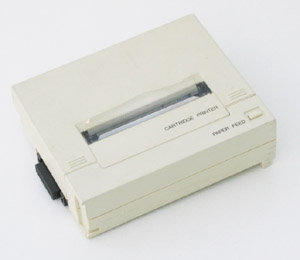
The active printer is selected with DIP switch 5 and 6 (Source: Operating manual, 4.3 Printers);
| Switch 5 | Switch 6 | Interface |
|---|---|---|
| OFF | OFF | Serial interface |
| OFF | ON | RS-232C interface |
| ON | OFF | Cartridge printer |
| ON | ON | Parallel printer |
The Cartridge printer operates in HS mode, device code 09h.

In the Operating System Reference Manual is a Modem Sample Program that demonstrates the cartridge. As I have no modem cartridge, I cannot test this.
The Modem cartridge operates in IO mode, device code 0Fh.
H407A
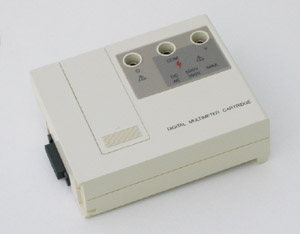
- DCV: auto, 300mV, 3V, 30V, 300V, 500V
- ACV: auto, 3V, 30V, 300V, 350V
- Ohm: auto, 300ohm, 3kohm, 30kohm, 300kohm, 3000kohm
- Low power ohm: auto, 3kohm, 30kohm, 300kohm, 3000kohm
The DMM cartridge operates in IO mode and communicates over a serial line with the CPU. 600 bps, 8-bit, no parity, one stop bit (Source: Operating System Reference Manual, 5.1.7.3 DMM cartridge).
The serial line is the third serial option, next to the RS-232C and SERIAL (SIO) options. As all share the same UART, they cannot be used simultaneously (Source: Operating System Reference Manual, 5.2 Serial Interfaces). BASIC demo program from the Technical Manual (incomplete, as it doesn't work on my DMM).
The DMM cartridge operates in IO mode, device code 0Eh.
H413A
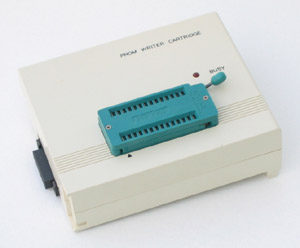
Another package in ROM is PROM WRITE 2, which is an integrated image creator and programmer. The manual is in the Virtual library.
The PROM writer cartridge operates in DB mode, device code 08h.
A PROM WRITER CARTRIDGE II exists with a 32 pin ZIF socket, but it might work only on a PX-16.
